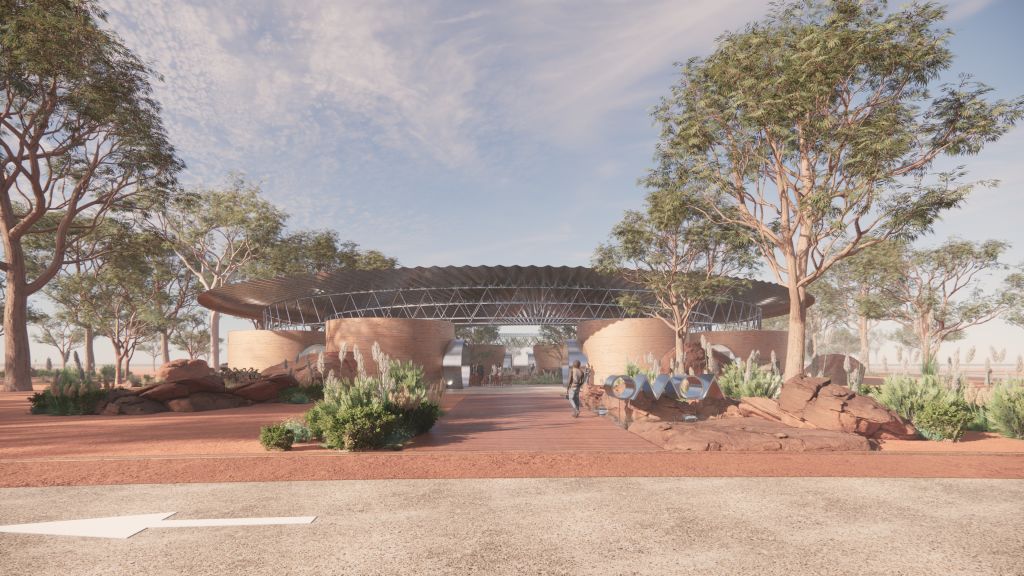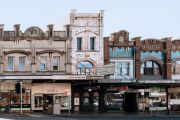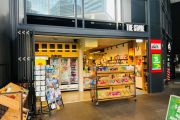
If you build it, they will come. A new Australian museum is on the drawing board
The tourism gold rush for selling entry tickets to the grey nomads and road trippers roaming through the Australian countryside has definitely moved up the cultural experience hit-list from the “big” attractions – merino, banana, prawn, potato, et al – to high-quality museums.
The latest to be announced is OMOA, the acronym that will attach to the coming Outback Museum of Australia to be built in Charleville, a crossroads south-western town that likes to style itself as the gateway to outback Queensland.
Melbourne’s MARCH.STUDIO has won the very short lead-time design competition with a proposal to make a museum dedicated to showcasing the grit and resilience of the people who’ve lived and worked in the vast and harsh outback. Made from rammed earth, it takes the form of eight circular pavilions.
MARCH principal Rodney Eggleston says the studio’s competition entry came together quickly and “very organically”. One of the major premises of its approach “was to create the most amount of shade as efficiently as we possibly could”.
“In the outback, it can be 15 degrees cooler when you’re sitting in the shade,” he says.
Over all the variously scaled pavilions, a huge and raised fan-pleated circular roof will be made of Aramax, “a material that you can pinch to create the fan circle”.
The centre of the roof will be open so that, in the wet season, when the rains can be epic, water will cascade from the roof into a central courtyard that is focused on a meeting area that will be used for smoking ceremonies. The water effect will reference the springs and gorges of the outback.
Eggleston says while the practice is thrilled with the win – for what is a relatively small budget in the scheme of raising these cultural destinations – as it represents another design realm that it has been wanting to move into.
With the exception of a few radically distinct public buildings – such as the startling, metallic-faced Jacalope Pavilion “rain pavilion” at St Kilda’s Prince of Wales Hotel – MARCH has been chiefly known as a residential design firm. That said, many of their houses have been award winners.
With a handy federal government contribution of $7.94 million, the projected budget for OMOA is $8.4 million. Murweh Shire Mayor Shaun Radnedge is confident the product “will turn Charleville into a premier tourist destination”.
Given the financial and visitor number impact on the outback that occurred during the peak COVID years, it makes a lot of sense for yet another township to raise yet another themed attraction. In only 11 months in 2020-21, visitor numbers out there on the roads lifted by some 37 per cent.
There are already quite a number of stunning museums in Queensland, including two at Winton – Australian Age of Dinosaurs and the Waltzing Matilda Centre – and two at Longreach – the Qantas Founders Museum and the Stockman’s Hall of Fame. But there are many dusty kilometres between them, and people obviously develop quite a thirst for culture.
Indeed, there’s hardly a town worth the title, particularly in coastal Queensland, that lacks a cultural facility of some scale.
Australia-wide, some $2.4 billion of museums have either recently been delivered, including the Shepparton Art Museum, the $400 million WA Museum Boola Bardip in Perth, and the $68 million Bundanon on the NSW South Coast, or are pending. The $915 million Powerhouse Parramatta is due to be completed next year.
What the jury liked a lot about MARCH’s approach to the Outback museum was that it was, in contrast to the others’ new attractions, “an exemplary building with an innovative but simple agenda and an agile design that will stand the test of time”.
They saw it as being of human scale, materially honest and presenting a unique curatorial opportunity.
MARCH is now to drill down into detailing its competition winner. As Eggleston says, “It’s early days and we don’t yet understand everything that will be exhibited.”
What the architects do know is that it will be made of earth derived from the site and visitors will be invited to move naturally through the premises.
Eggleston has a big-picture view of what the win represents for the design profession saying, “It’s nice to have an acclamation that everything is shifting – finally.”
What he means is that, following the unknowns and project hesitations of the pandemic years, architects are getting back to the drawing board to deliver more of the buidlings of the future.










